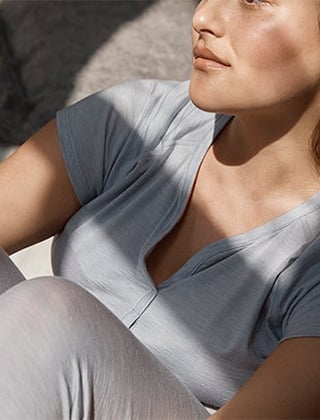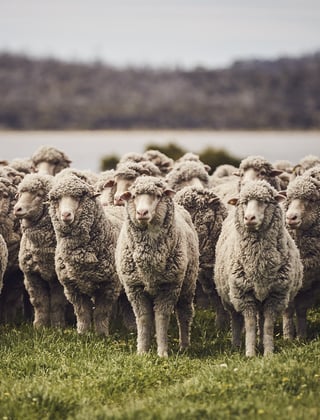New study backs wool for ‘stop-go’ sports

A new AWI-funded study provides the scientific proof to sports brands and consumers that 100% natural wool fabrics provide better thermal comfort than other natural and synthetic fabrics during outdoor ‘stop-go’ sporting activities, especially during the resting phases when the potential for chilling is greatest.
Fast facts
- A new AWI-funded study demonstrates that 100% wool base-layer garments provide greater thermal comfort in outdoor ‘stop-go’ sports – such as hiking, cycling and rock climbing – and that this is most noticeable during the resting phases of these sports when the potential for experiencing ‘after-chill’ is greatest.
- The study also suggests that sportspeople wearing wool use less energy to maintain their thermal equilibrium, than if they wear other natural and synthetic fabrics, leaving the athletes with more energy to use during their sport and competition. The final phase of the research in 2024 aims to identify the scale of this effect and its relevance to athletes.
- AWI and its marketing arm The Woolmark Company are highlighting the results of this study to the sports and outdoor industry and to consumers.
Anecdotal evidence from outdoor sportspeople, such as hikers, cyclists and rock-climbers, has often indicated that only base-layers made from wool are comfortable at all stages of their sport, including before, during and after exercise, compared to base-layers made from other fibres.
However up until now, there has been no laboratory research to identify and validate this benefit that appeared to be unique to wool. In the absence of scientific evidence, some sports and outdoor brands have been reluctant to preference wool over other fibre types – hindering potential future demand for wool.
To address this knowledge gap and provide proof about the effectiveness of wool fabrics in next-to-skin activewear, AWI funded a three-year PhD study at North Carolina State University, a research leader in the textile space. The results of the study provide the scientific evidence of wool’s superior thermal comfort and suitability throughout all the phases of stop-go sports.
What is the sweaty issue with stop-go sports?
Active outdoor sports such as hiking, cycling and rock climbing are also known as ‘stop-go’ sports because they encompass multiple activity and resting phases. Stop-go athletes sweat during the active phase, which is absorbed by their clothing, and this sweat then evaporates from the clothing during resting periods.
This evaporation has a cooling effect and can be uncomfortable. For example, a cyclist builds up a sweat during a hill climb, but is susceptible to chilling when cruising back downhill.
The solution is to wear the right clothes that enable the body to maintain more stable thermal comfort by buffering the microclimate between the fabric and the skin. Wool is ideal for this.
Study proves wool’s superiority during resting phases
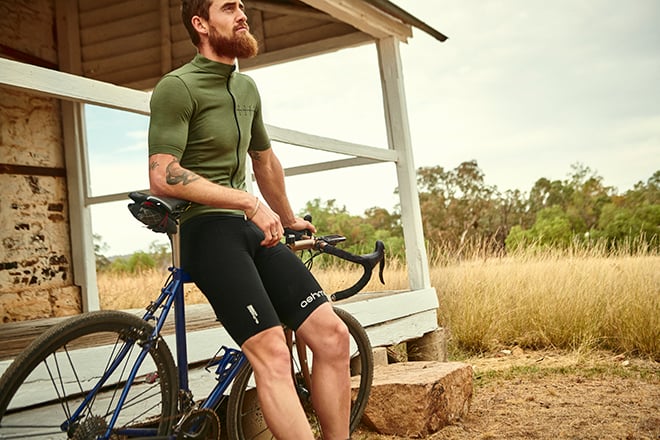
The benefits of wearing wool are experienced throughout all phases of stop-go sports, especially during the resting periods when the potential for chilling is the greatest.
The garments tested at North Carolina State University were made from 100% wool, cotton, viscose and polyester – all of similar fabric weight and thickness. The fabrics were each tested using ‘sweating manikins’ and then humans.
The sweating manikin studies demonstrated wool to be the fibre with the highest capacity to buffer a transition from an environment of 45% relative humidity to 80% relative humidity, with an impressive temperature buffering efficiency that is 26% superior to viscose, 45% superior to cotton, and 96% superior to polyester.
The sweating manikin study clearly highlighted wool’s ability to maintain thermal comfort during the resting phase by countering the evaporative cooling effect of fabric drying.
In the human testing, 12 students wore the garments during activity in a controlled climate chamber on an exercise cycle followed by resting in a simulated breeze to reflect outdoor circumstances. The subjects were asked to rate their comfort and thermal sensation throughout each stage of exercise.
During the activity phase, no significant differences between the fibre types were detected by the subjects. However, during the resting phase, the wearer’s perceptions associated with fibre type became significant.
Figure 1: Thermal sensation rating over time
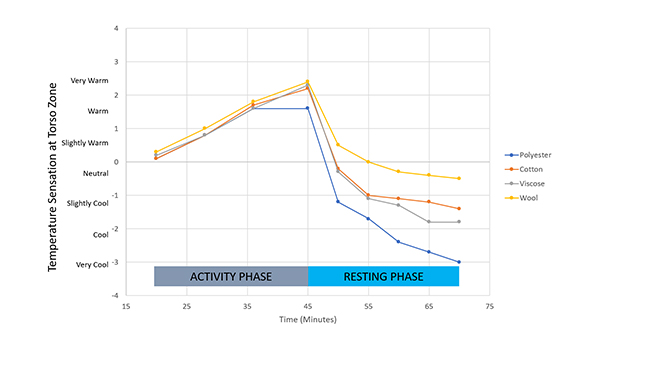
Figure 2: Perceived comfort rating over time
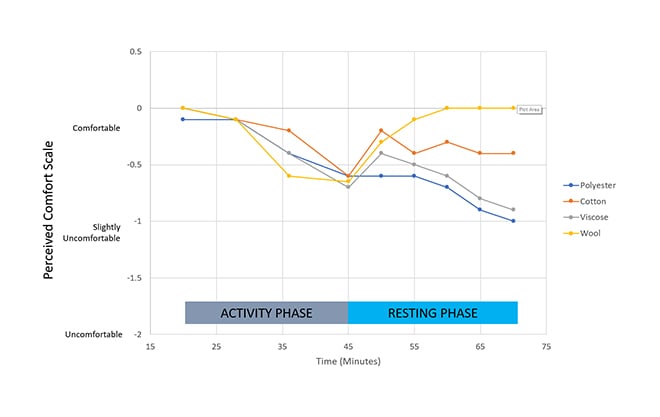
It is clear from Figures 1 and 2 above that the wool garment maintained greater thermal sensation and perceived comfort during the resting phase compared to all the other garments.
Although the polyester fabric dried out more quickly, that did not translate into enhanced comfort. In fact, the reverse was observed, which can be attributed to a significant decrease in skin temperature. The wool fabric had stabilised thermal sensation after the first 10 minutes of resting but the polyester fabric was still trending cooler and less comfortable after 25 minutes or more.
The garments made from cellulosic based fibres, cotton or viscose, tended to perform midway between the extremes shown by the wool and polyester garments.
“An inherent feature of ‘stop-go’ sports is the ongoing sequence of activity and rest – for example rock climbers take multiple rests as they make their way up the cliff face. This is important, as the research indicates that wool’s ability to minimise after-chill and maintain greater comfort than other fibre types continues to be experienced throughout the stop-go sport.”
- Angus Ireland, AWI Program Manager, Fibre Advocacy & Eco Credentials
AWI Program Manager, Fibre Advocacy & Eco Credentials, Angus Ireland, says the researchers concluded that the interplay between wool’s attributes was responsible for maintaining comfort for stop-go athletes.
“The combination of wool’s ability to absorb moisture, generate heat and then only gradually release that moisture, together with its hydrophobic outer layer deferring rapid evaporation and cooling, were concluded to be responsible for wool’s dominance,” Angus said.
“The study demonstrates that wool base-layer garments deliver significantly better comfort and temperature performance to athletes for an extended resting period. Wool’s ability to diminish after-chill was seen to be long-lasting, showing no sign of disappearing even 25 minutes into a resting phase.
“While quick-drying fabrics like polyester do lower humidity levels next to the skin, they do not lead to better outcomes for the athlete. The athlete perceives rapid drying during the resting phase as uncomfortable because the rapid evaporation of sweat leads to chilling.”
“Brands need to re-evaluate their focus on quick-drying sportwear and instead preference garments made from fibres, such as wool, that have been specifically designed by nature for dynamic activities.”
- Angus Ireland, AWI Program Manager, Fibre Advocacy & Eco Credentials
Wool helps athletes conserve energy
The study also suggests that athletes wearing wool expend less energy maintaining their thermal comfort during both the activity and rest phases, with the combined energy consumption half or less than that of all other fibres (see Figure 3).
“By using less energy to maintain their thermal comfort, the athlete that wears wool is left with more energy to use during their sport and competition. Research is ongoing to identify the scale of this effect and its relevance to athletes, but it is significant to be able to identify fabrics that require less energy from the athlete,” Angus said.
Figure 3: Athlete energy requirements to maintain thermal comfort during 30 minutes’ activity and 30 minutes’ rest

This article appeared in the March 2024 edition of AWI’s Beyond the Bale magazine. Reproduction of the article is encouraged.






